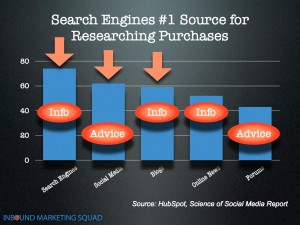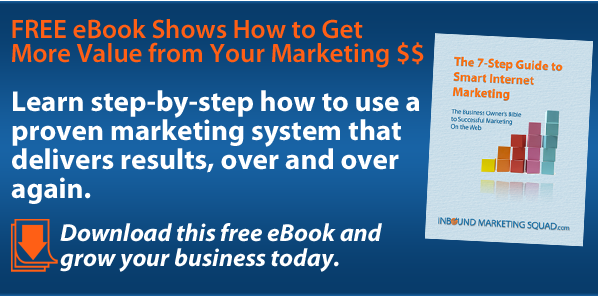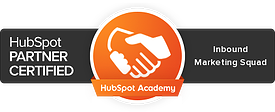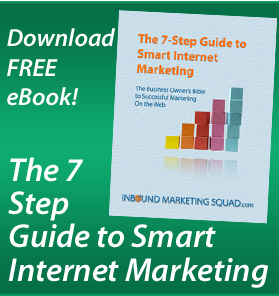 Whenever I go to Chamber of Commerce, BNI, LeTip and other business leaders' meetings, the one question I am always asked is "What can inbound marketing do better for me? I'm a local business and all my customers are within 50 miles. I advertise in local publications and on local websites. I run radio ads and mail postcards with specials every month. What can inbound marketing do that these things can't?"
Whenever I go to Chamber of Commerce, BNI, LeTip and other business leaders' meetings, the one question I am always asked is "What can inbound marketing do better for me? I'm a local business and all my customers are within 50 miles. I advertise in local publications and on local websites. I run radio ads and mail postcards with specials every month. What can inbound marketing do that these things can't?"
My usual reply is: "If you're interested in creating a trusted relationship with those prospective customers who:
- may not even be able to tell you exactly what their problem / pain / desire is
- are still searching for a solution to their pain / problem / desire or
- aren't even sure what options they have or
- haven't yet made up their minds about what solution they want
...then inbound marketing can do wonders for your business."
Typical locally-based advertising and direct mail is direct-response based. The assumption behind direct-response marketing is that the receiver of those communications is ready, willing and able to buy and doesn't mind being interrupted with your message.
The problem is, that unless they are in that particular state of mind, which makes it easier for your message to get through to them, they've blocked you out. Not just mentally, but with every means at their disposal -- from Netflix, Hulu and DVRs to Sirius, iPods and Pandora, caller ID, spam and pop-up window blockers.
Inbound marketing, on the other hand, is a permission-based marketing strategy. The prospective customer is in total control of the relationship and once she's let you in, you now have the opportunity to continue a respectful, helpful dialog with her. Done well, she comes to know, like and trust you. And those are the key conditions for being her first choice when she finally makes a buying decision.
That's creating brand preference in the social era.
I also usually ask this business owner how he knows which of those things he's doing are working. Invariably his answer is usually that people show up and buy, and when he doesn't do those things, fewer people show up. But he can't tell me which ones are working, or why they work or how much more profit they're making because of the marketing they're doing.
I'm not here to say stop using traditional marketing completely. NOT at all. In fact, for local businesses, it's a healthy combination of inbound (pull) and outbound (push) that can make a significant difference in growing your business. Note I said "healthy combination."
A healthy combination is the optimal mix of marketing actions that generate the greatest ROI for the marketing investment you make.
To be able to do that, you need to have a plan, a disciplined process and the means to track the different marketing actions you take and connect them with the results each one creates. Otherwise, you'll wind up like John Wanamaker, who once said "Half the money I spend on advertising is wasted; the trouble is I don’t know which half.”
For whatever reason, small localized business owners seem to think that just because they operate their business in a limited geographic area, the Internet and inbound marketing are a waste of time, money and energy for them. That inbound marketing works only for companies that can ship products anywhere. Or for firms that deliver services if the client's willing to pay for them to travel there (or virtually). (Think bookkeeping and accounting, legal and financial advisors, coaching, consulting, training, graphic and web design, photography, etc.).
Those types of businesses are certainly among those shifting more and more of their marketing investment dollars to inbound marketing. But serving a limited geographic market doesn't mean a small localized business can't take advantage of what inbound marketing offers: lower costs and a greater return on their marketing investment.
In fact, inbound marketing can be even more effective for local and regional small businesses, thanks to the average person's buying behaviors and the on-going efforts of search engines to provide more and better tailored search results.
 Search Engines #1 Source for Researching Purchases
Search Engines #1 Source for Researching Purchases
Since more than 62% of Americans do research on the Internet (HubSpot) before buying, no business of any size can afford to ignore their web presence any longer.
What this means for a small business owner is that if you're trying to attract new customers, local prospects are researching online how they can solve their problem. In fact, 90% of online searches result in an offline bricks and mortar purchase (ComScore) and 73% of Internet searches are related to local content (Google).
Local people are no different than anyone else. Just walk into any store -- Best Buy, Home Depot, Costco, Safeway and watch people using their mobile devices to research brands, models, options, and prices. Watch as they text or Facebook their friends, check on Yelp, Groupon, etc. I'll even bet you're guilty (I know I am) of researching on the Internet before you buy (locally or not).
Bottom line: If you want to be a part of a prospect's decision process, that person must be able to find your business on the Internet. You need to be found WHEREver she's looking, WHENever she's looking. And you need to give her the information she needs that helps move her along in her decision — whether that's a checklist of things to do to improve what she's doing, an ebook that shows her how to "do it all herself" — until she's ready to choose you.
That's why smart local business owners are embracing inbound marketing plans that include:
- Building in local keyword search terms into their content
- Creating and "curating" new, original, fresh content that provides pragmatic, useful and actionable information, and doing it on a regular basis
- Sharing that content across their social networks, especially among local groups
- Creating relationships with local bloggers, news sites and influential websites through commenting and mutual guest posting
- Participating in local discussion forums
- Claiming / registering their business on local business directories, Google Places, Yelp and other review sites
To learn more about inbound marketing and the methodology, here are some additional articles you may find helpful:








